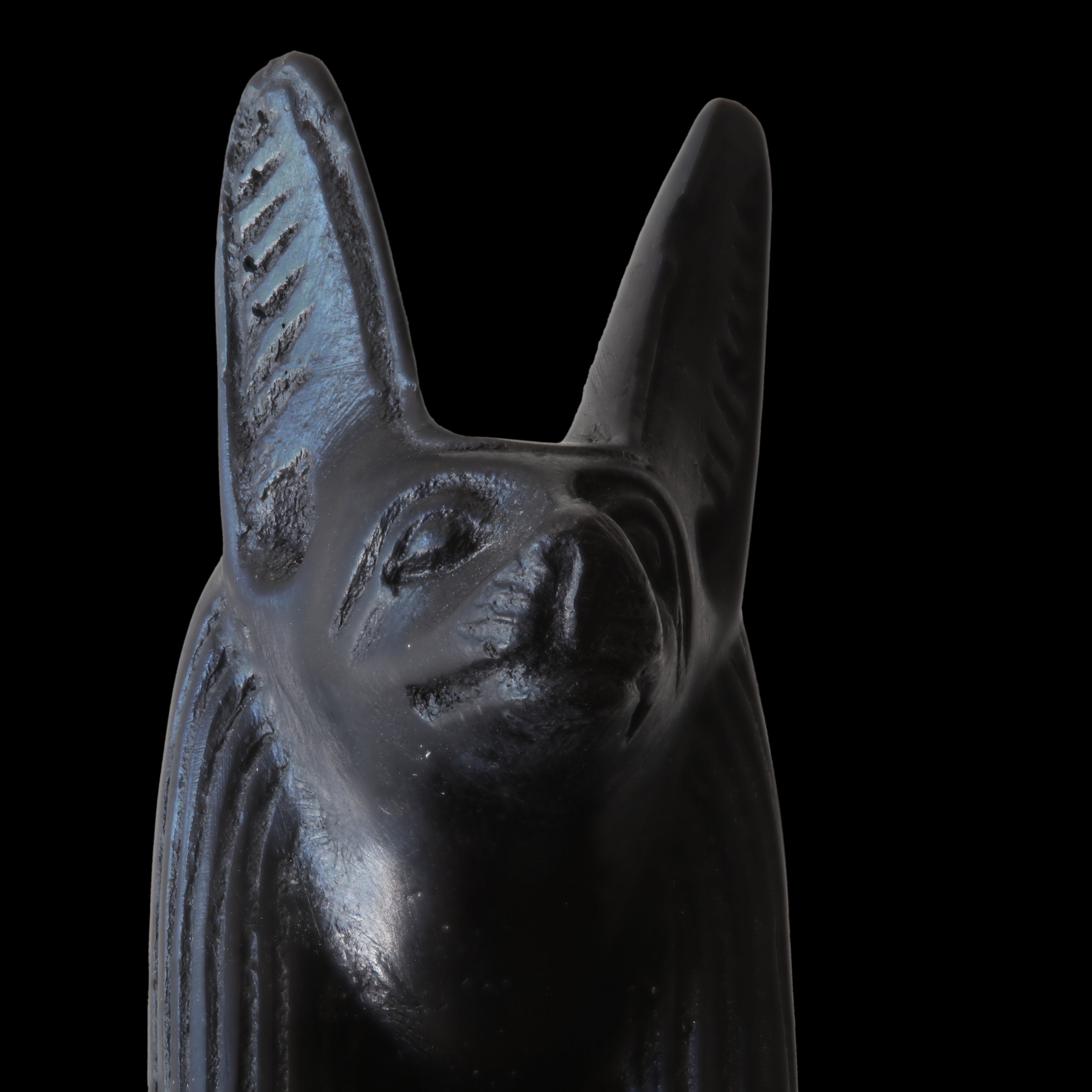Kebechet on:
[Wikipedia]
[Google]
[Amazon]
 In
In
 In
In Egyptian mythology
Egyptian mythology is the collection of myths from ancient Egypt, which describe the actions of the Egyptian gods as a means of understanding the world around them. The beliefs that these myths express are an important part of ancient Egyptia ...
, Kebechet (spelt in hieroglyph
A hieroglyph ( Greek for "sacred carvings") was a character of the ancient Egyptian writing system. Logographic scripts that are pictographic in form in a way reminiscent of ancient Egyptian are also sometimes called "hieroglyphs". In Neoplatoni ...
s as Qeb-Hwt, and also transliterated
Transliteration is a type of conversion of a text from one script to another that involves swapping letters (thus '' trans-'' + '' liter-'') in predictable ways, such as Greek → , Cyrillic → , Greek → the digraph , Armenian → or ...
as Khebhut, Kebehut, Qébéhout, Kabehchet and Kebehwet) is a goddess
A goddess is a female deity. In many known cultures, goddesses are often linked with literal or metaphorical pregnancy or imagined feminine roles associated with how women and girls are perceived or expected to behave. This includes themes of s ...
, a deification of embalming liquid. Her name means ''cooling water''.
Myths
Kebechet is a daughter ofAnubis
Anubis (; grc, Ἄνουβις), also known as Inpu, Inpw, Jnpw, or Anpu in Ancient Egyptian () is the god of death, mummification, embalming, the afterlife, cemeteries, tombs, and the Underworld, in ancient Egyptian religion, usually depict ...
and his wife Anput
Anput is a goddess in ancient Egyptian religion. Her name is written in hieroglyphs as ''jnpwt'' (reconstructed in Middle Egyptian as /ʔan.ˈpa.wat/ or /jan.ˈpa.wat/). In English, her name also is rendered as Anupet, Input, Inpewt, and Yinep ...
. In the Pyramid Texts
The Pyramid Texts are the oldest ancient Egyptian funerary texts, dating to the late Old Kingdom. They are the earliest known corpus of ancient Egyptian religious texts. Written in Old Egyptian, the pyramid texts were carved onto the subterranea ...
, Kebechet is referred to as a serpent
Serpent or The Serpent may refer to:
* Snake, a carnivorous reptile of the suborder Serpentes
Mythology and religion
* Sea serpent, a monstrous ocean creature
* Serpent (symbolism), the snake in religious rites and mythological contexts
* Serp ...
who "refreshes and purifies" the pharaoh
Pharaoh (, ; Egyptian: ''pr ꜥꜣ''; cop, , Pǝrro; Biblical Hebrew: ''Parʿō'') is the vernacular term often used by modern authors for the kings of ancient Egypt who ruled as monarchs from the First Dynasty (c. 3150 BC) until the an ...
.
Kebechet was thought to give water to the spirits of the dead while they waited for the mummification
A mummy is a dead human or an animal whose soft tissues and organs have been preserved by either intentional or accidental exposure to chemicals, extreme cold, very low humidity, or lack of air, so that the recovered body does not decay furth ...
process to be complete. She was probably related to mummification where she would fortify the body against corruption, so it would stay fresh for reanimation by the deceased's ''ka''.
References
Egyptian death goddesses {{Egyptian-myth-stub ca:Llista de personatges de la mitologia egípcia#K